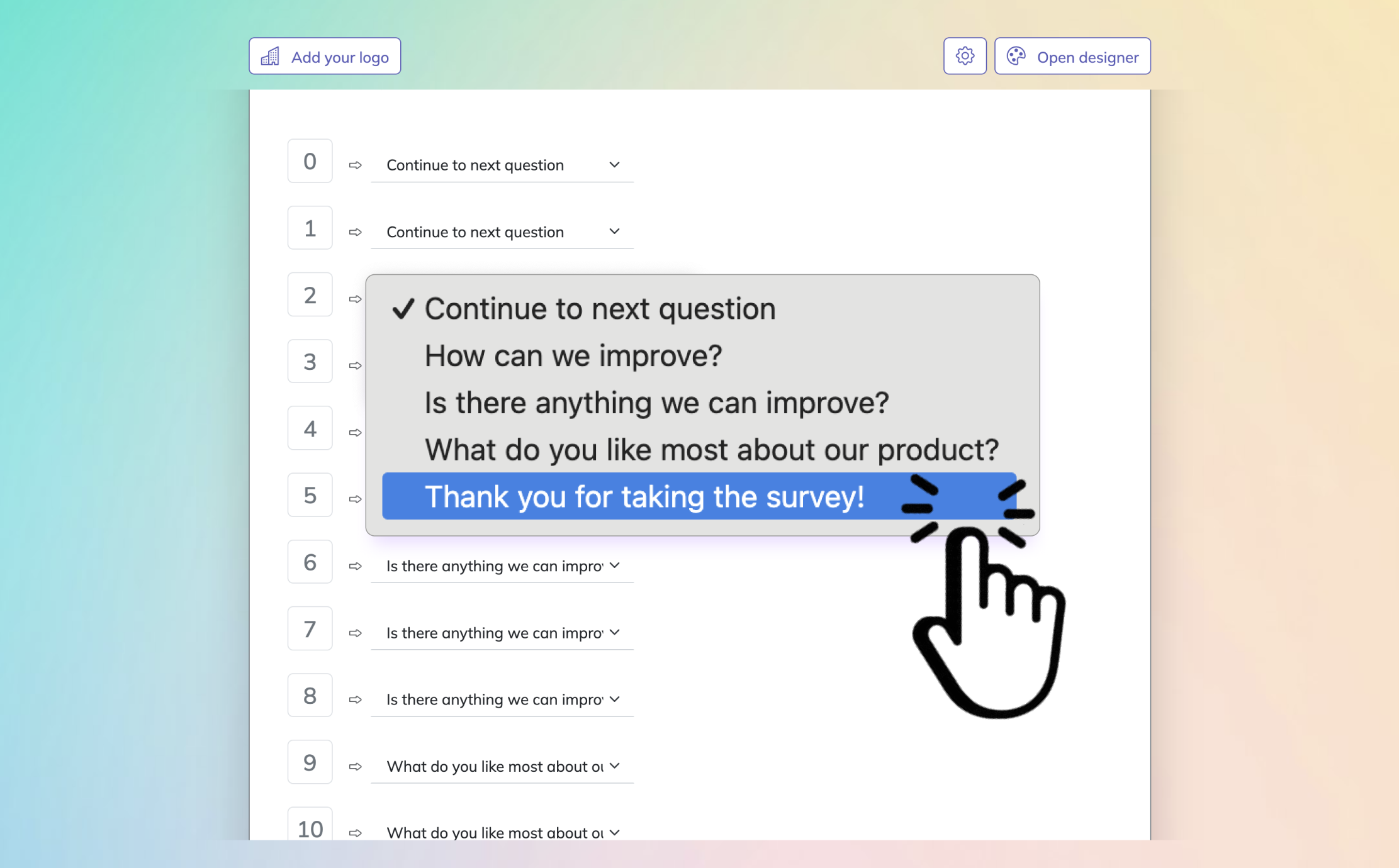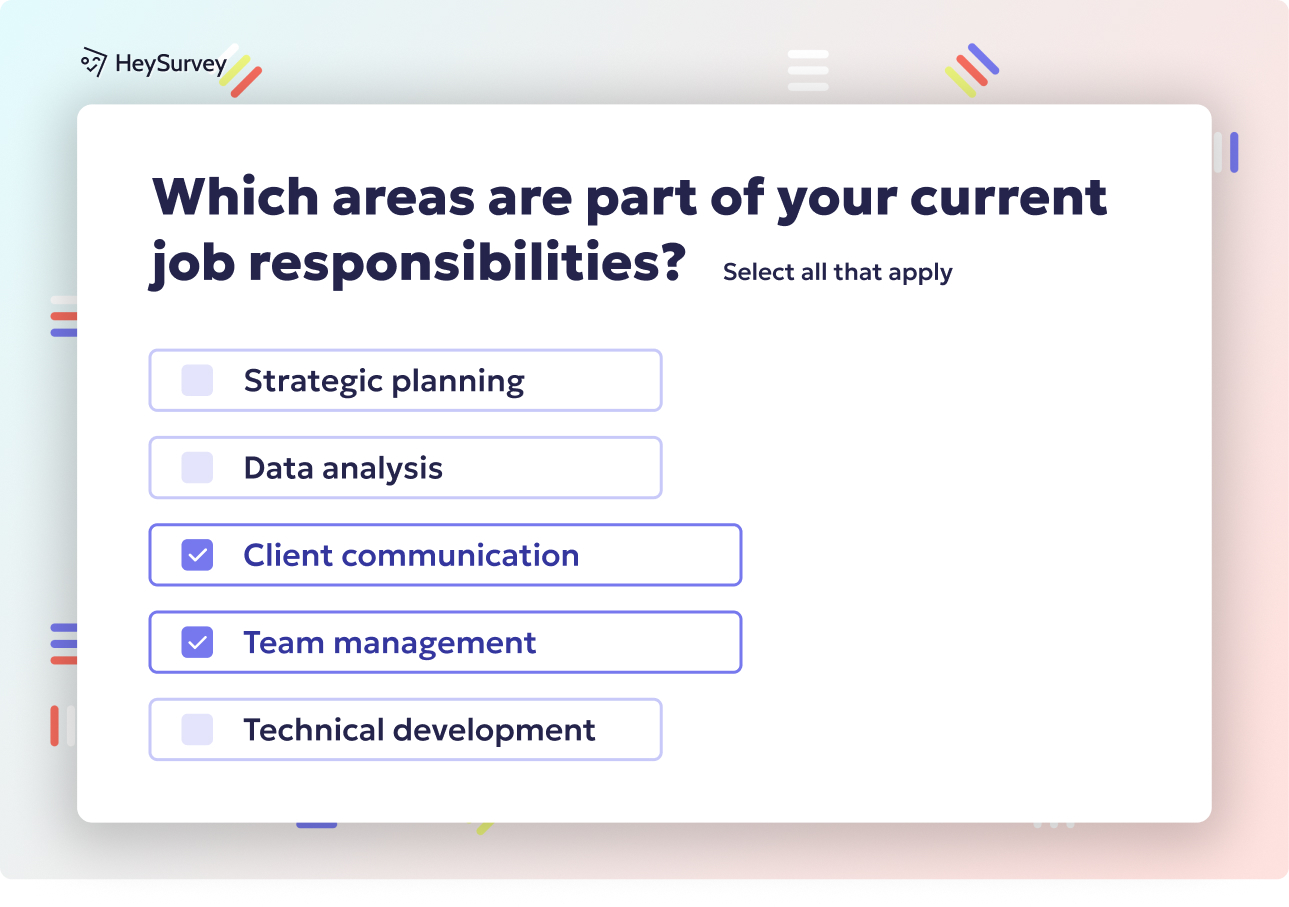28 Teachers Survey Questions to Improve Classroom Experience
Discover 25 effective teachers survey questions to boost classroom feedback and engagement—perfect for creating your own impactful surveys.
Teachers Survey Questions – The Complete Guide to Gathering Actionable Feedback from Students, Parents & Peers
Every teacher wants to know what works and where things fizzle—without wading through cold, formal evaluations. That’s the sweet spot of a survey for teachers or a questionnaire for teachers, which transforms classroom whispers into action plans and brings fresh insights from students, parents, and peers. With search trends booming around classroom management survey, teacher feedback questions, and survey tools for teachers, the buzz is real. Dive in to discover eight essential survey types you can use, each paired with the “why,” “when,” and five practical sample questions.
Student-to-Teacher Feedback Survey
What It Is & What It Does
When you think about those buzzworthy student surveys for teachers, this is the classic choice. It’s all about getting straight-from-the-source insight into instruction—no smoke, no mirrors. A questionnaire for teacher effectiveness created for students peers into how well lessons land and whether you’ve built a supportive vibe.
These surveys go right to the heart of student experience, making them a favorite among teachers ready to fine-tune their teaching game. Plus, they champion student voice, showing learners their opinions are valued.
Why & When to Use
Here’s the thing: deliver this survey to your students mid-semester if you want to catch and correct issues before grades get locked in—or grab summative feedback at the term’s end for next year’s planning. Grades 4–12 are the gold zone since those students can actually reflect on instruction, not just talk about snacks.
Best part? You’ll catch things you’d never spot yourself, like which jokes flopped or if last week’s group project was pure magic.
Sample Questions
How clearly does the teacher explain new concepts?
Which classroom activities helped you learn the most?
How comfortable do you feel asking for help in this class?
What could your teacher do to make lessons more engaging?
Rate the pace of the course content on a scale of 1–5.
Student feedback is widely regarded as an effective tool for teacher evaluation and professional development, with more than two-thirds of both students and teachers agreeing it supports faculty growth (source)
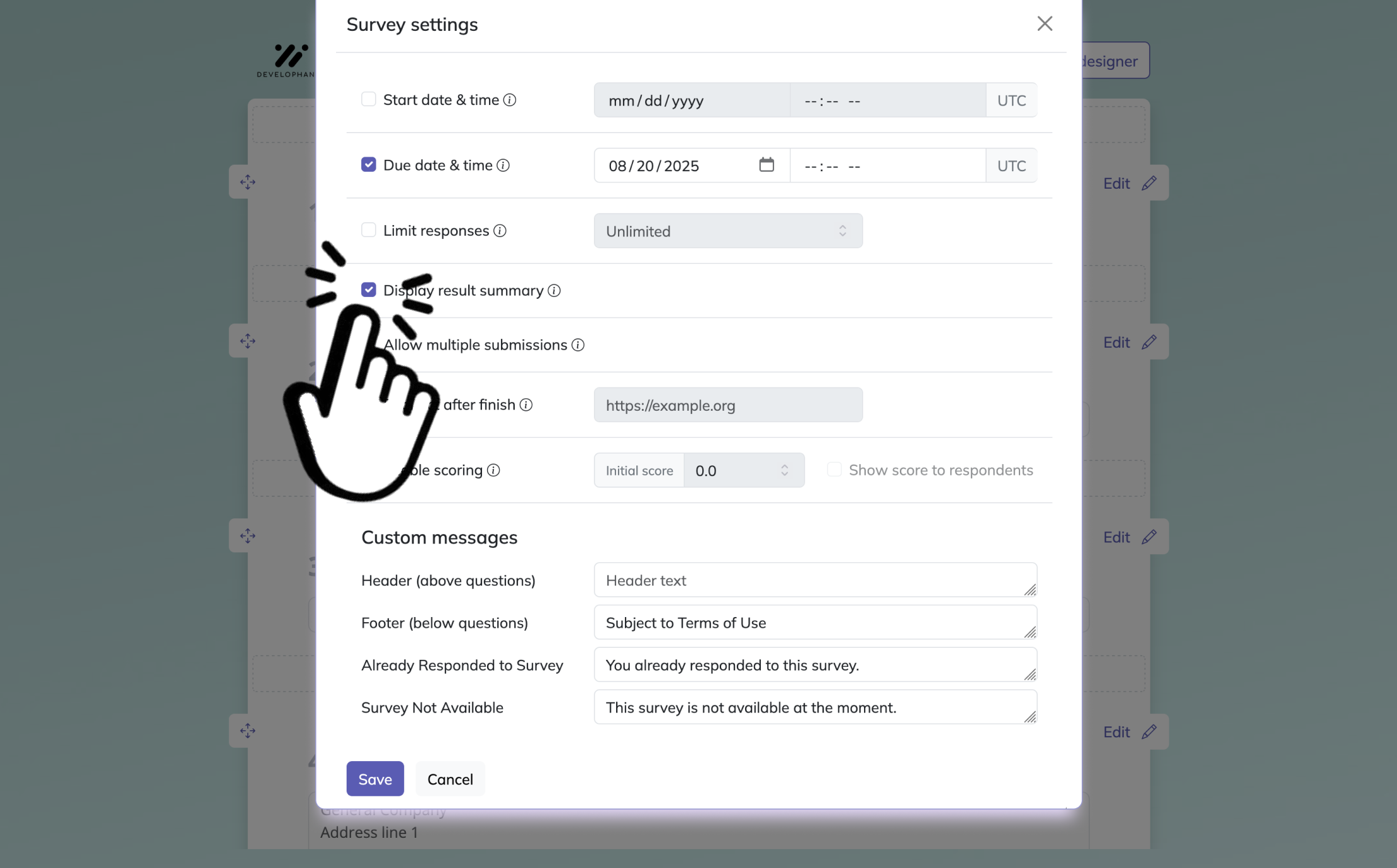
Certainly! Here are simple, step-by-step instructions for creating a survey on HeySurvey, tailored for beginners and including bonus tips. After following these, you can get started instantly by clicking the button below the instructions to open a ready-to-use template.
How to Create a Survey with HeySurvey: Simple 3-Step Guide
Step 1: Create a New Survey
- Click "Create Survey" on the dashboard.
- Choose whether to start from scratch, use a template, or type in your own questions to instantly generate a survey.
Step 2: Add Your Questions
- Inside the Survey Editor, click the “Add Question” button.
- Select your desired question type (e.g., Multiple Choice, Text, Scale).
- Fill in your question, optional description, and answer choices.
- Mark questions as required if necessary.
- Use the duplicate icon to quickly copy similar questions.
Step 3: Preview & Publish
- Click Preview to see exactly how your survey will look to respondents.
- When satisfied, click Publish.
- Note: You’ll need to sign up or log in to publish and collect responses.
- Copy the generated link or embed the survey on your website!
Bonus Steps (Optional Enhancements)
Apply Your Branding:
Upload your business or organization logo and set your brand colors for a professional touch using the Designer Sidebar or the Branding panel.Customize Settings:
Define a start and end date, set a response limit, or add a redirect URL for after the survey is completed in the Settings Panel.Skip or Branch Questions:
Use branching to send respondents to different questions or endings based on their answers, ensuring a personalized experience.
Ready to get started?
Click the button below to open a survey template and begin your creation with HeySurvey!
If you’d like to learn more about each feature, see the detailed guide below.
Happy surveying!
Teacher Self-Assessment Survey
Reflect, Set Goals, and Grow
Nothing beats a bit of honest self-reflection—except maybe free coffee in the teacher’s lounge! This core questionnaire for teacher growth prompts you to take a step back and evaluate your teaching moves. Unlike top-down evaluations, self-assessment surveys are your personal PD launchpad.
A questionnaire for teachers made by teachers highlights strengths and flags that “hmm, not my best moment” feeling we all know. This is about growing, not grading.
Why & When to Use
Use this survey at the start or end of the school year when you’re wide-eyed with possibilities. Plug it into your appraisal cycles or professional development plans so your goals and PD line up like neat little ducks.
On top of that, these self-assessment surveys spark ownership—your growth, your pace, your style. It’s like a pep talk in survey form!
Sample Questions
Which instructional strategies were most effective for your last unit?
Identify one area of classroom management needing improvement.
How effectively did you integrate technology into lessons?
Rate your differentiation practices for diverse learners (1–5).
What professional development topics interest you this year?
A meta-analysis found that professional development significantly boosts K‑12 STEM teachers' self‑efficacy, with a medium effect size (Hedges’ g ≈ 0.55) [source].
Classroom Management Survey
Get Real About Challenges
Let’s be honest: problems of teachers in classroom management pop up even in dream classes, and a survey can be an instant microscope into what’s actually happening. Unlike long staff meetings that never solve anything, a 10 items questionnaire for classroom management lets you nip issues before they explode.
These surveys help you and your team decode which routines trip kids up, where class rules wobble, and when distractions sneak in—think of it as a spotlight for classroom blind spots.
Why & When to Use
Jump into a classroom management survey if you notice a sudden burst of rowdiness or if you want to preempt drama midway through the term. When you need to understand classroom climate or design your next “calm-down-corner,” survey data beats gut feeling every time.
Plus, when you actually act on results, students see that their feedback matters—no magic wands needed.
Sample Questions
How consistently are class rules enforced?
Which routines feel unclear or confusing?
What classroom factors distract you the most?
How safe do you feel expressing opinions in this room?
Suggest one change that would improve class behavior.
Professional Development Needs Survey
Prioritize Growth (and Your Budget)
There’s never enough time—or cash!—for all the PD teachers want. That’s why a survey for teachers targeting professional growth makes the training budget actually stretch. These surveys ask what teachers really need, not just what’s trending in education Twitter.
With a clear questionnaire for teachers about PD, you can ditch the one-size-fits-none workshops. Think of it as your district’s personal wishlist for staff learning.
Why & When to Use
The best time? End of spring, right before PD plans get set in digital stone. Feed the results into next year’s district catalog, or use them to tweak “lunch and learn” sessions so they actually help.
HeySurvey’s all-free magic makes it extra simple to create and share these, so cost concerns vanish.
Sample Questions
Rank your interest in workshops on differentiated instruction, classroom tech, or SEL.
How confident are you using data to guide instruction (1–5)?
Which certifications or micro-credentials are you pursuing?
Preferred PD format: in-person, online synchronous, or asynchronous?
List barriers preventing you from attending PD events.
Teachers spending more than eight hours in professional development activities—especially those addressing diverse or English learner student needs—are significantly more likely to report that PD “improved their teaching a lot” (e.g., 38 % vs. 9 %), highlighting the power of sustained, targeted training ([NCES] source).
Parent Feedback on Teacher Communication Survey
Building Strong Bridges
No crystal ball is required—just a smart survey! This questionnaire for teachers taps into how parents view communication from home. Partnering with families is easier when you know if your reminders, updates, and newsletters actually land (or get “lost” in the backpack abyss).
Clear, open communication is the key to building trust and community in any school, so these surveys never go out of style.
Why & When to Use
Try one mid-year to see if your weekly email could ditch the fluff or after report cards drop when questions bubble up. Quick wins include clarifying expectations, smoothing back-to-school jitters, or fixing that “radio silence” between teachers and parents.
If you discover parents crave more info or a different channel (hello, text updates!), it’s a 2-minute fix that feels like magic.
Sample Questions
How frequently do you receive updates about your child’s progress?
Which communication method (email, app, phone) works best for you?
How clearly are expectations explained at the start of a unit?
Rate your satisfaction with timely responses to your questions (1–5).
What additional information would you like to receive from the teacher?
Peer Observation & Colleague Feedback Survey
Collaborate Like a Pro
Here’s the friendly reality: even the best teachers have “off” days, so peer input is gold. This survey for teachers makes feedback less scary by encouraging open, positive dialogue between colleagues. No red pens are needed!
When teachers observe each other, everyone wins, because shared tricks and candid feedback get passed along in real time. Plus, it keeps teams strong and solves problems collaboratively.
Why & When to Use
Run this survey after any classroom walkthrough, PLC meeting, or demo lesson. The best timing is right after fresh eyes have seen your teaching so advice is specific.
Colleague surveys work magic on professional growth—less “gotcha,” more “great job!”
Sample Questions
Which instructional strength was most evident?
Describe one effective student-engagement tactic you observed.
Where could questioning techniques be refined?
How did classroom management support learning?
Suggest one resource that could enhance future lessons.
New Curriculum Implementation Survey
Smooth the Bumps, Fast
Launching anything new—curriculum, tech, schedule—can feel like herding cats. This is where a focused questionnaire for teachers about new curriculum makes or breaks rollout success. Find out fast if teachers have the resources, confidence, and support they need.
Instead of “wait and hope,” use this survey to pivot quickly when gaps appear in materials, pacing, or training. No more trial by fire!
Why & When to Use
Send your survey about 4–6 weeks after the curriculum lands so fresh impressions are still vivid. Pair another pulse-check after the first big assessment to spot growing pains.
On top of that, survey responses flag training needs you might otherwise miss.
Sample Questions
How confident are you teaching the new standards?
Were provided materials sufficient for lesson planning?
Which topics require deeper training?
How has student engagement changed since adopting the curriculum?
Identify barriers to full implementation.
Best Practices: Dos and Don’ts for Crafting Teacher Surveys
Let’s keep it real—crafting classroom surveys isn’t rocket science, but a few tricks can boost response rates and honesty.
Do: - Align questions with a single goal to avoid “survey fatigue.”
Use neutral wording and a balanced Likert scale.
Pilot test with a small group to spot confusing items.
Optimize survey length to 5–10 minutes max; use skip logic via online survey tools for teachers.
Plan follow-up actions and communicate findings to all stakeholders.
Don’t: - Ask double-barreled questions (like pace and difficulty in one).
Ignore anonymity—guarantee confidentiality for honest feedback.
Over-survey—space administrations strategically across the year.
On top of that, sprinkle a little personality into your question phrasing (a pun never hurts) while sticking to clarity and relevance.
Stellar surveys for teachers are practical, direct, and respect everyone’s time. That’s the ticket to a true feedback culture with real improvements. Build trust by sharing findings, taking visible action, and always keeping feedback loops open. Remember: HeySurvey is free, forever—no compromises, just results that make your classroom smarter, kinder, and more fun.
Related Teacher Survey Surveys
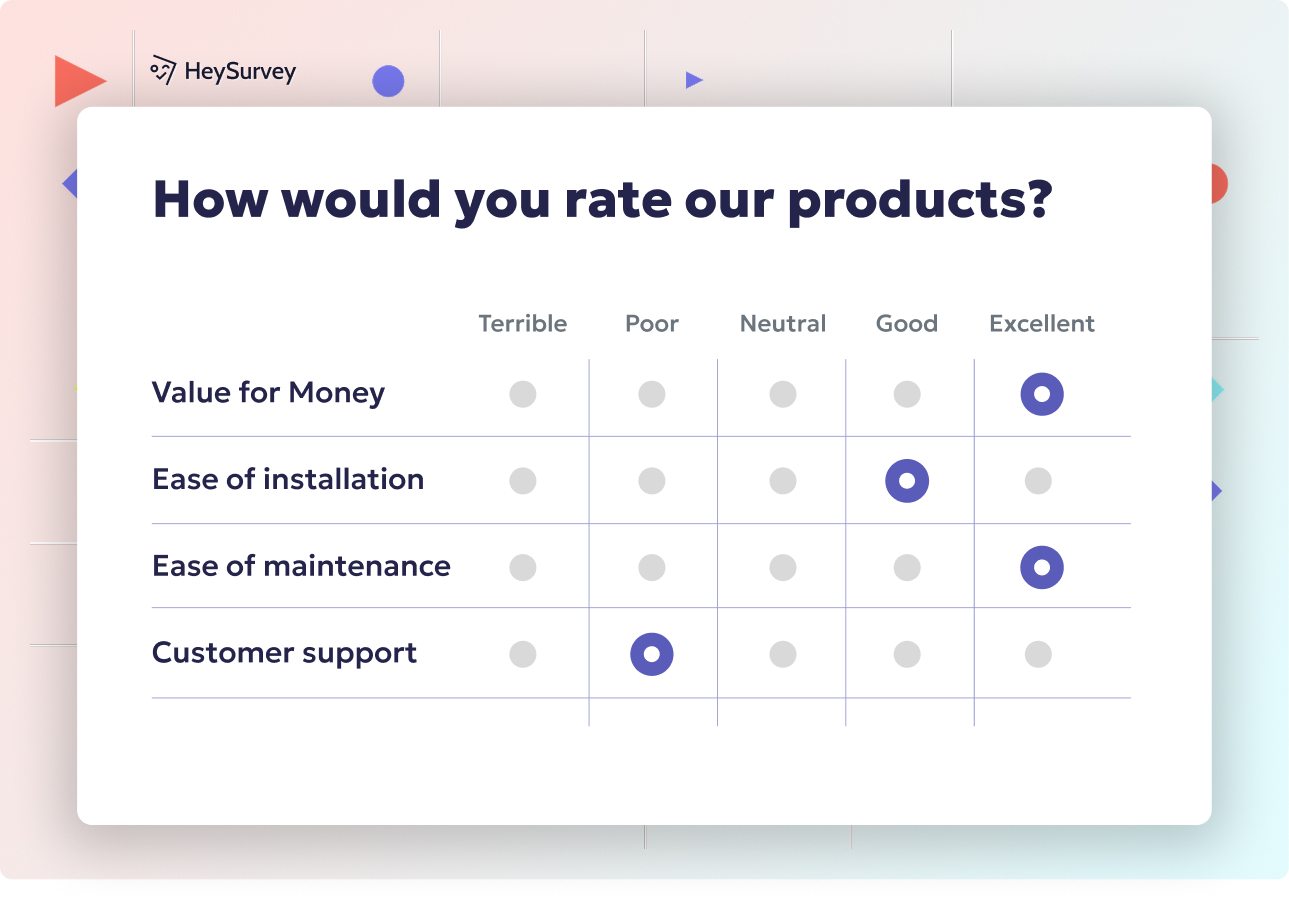
32 Teacher Perception Survey Questions for School Improvement
Explore 30 insightful teacher perception survey questions, covering school climate, PD needs, lea...
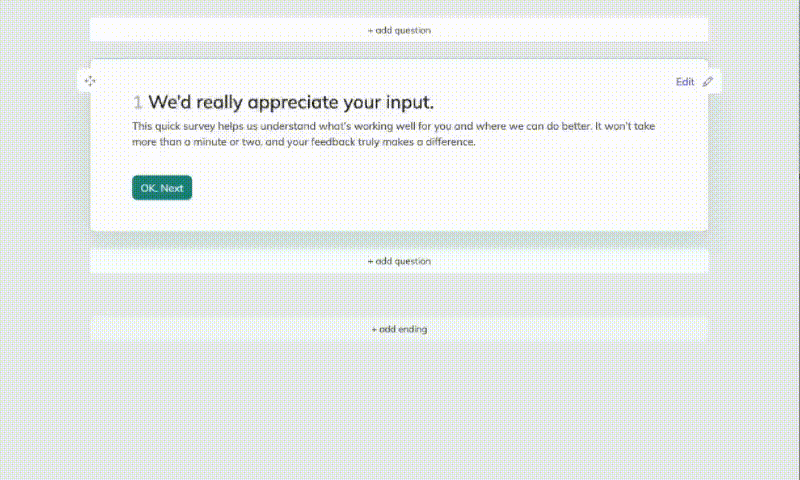
29 Survey Questions for Teachers to Boost Success
Explore 25+ insightful survey questions for teachers to boost engagement, professional growth, an...

32 Survey Teacher Evaluation Questions for Effective Feedback
Discover 25+ survey teacher evaluation questions with sample items and expert tips for effective ...
